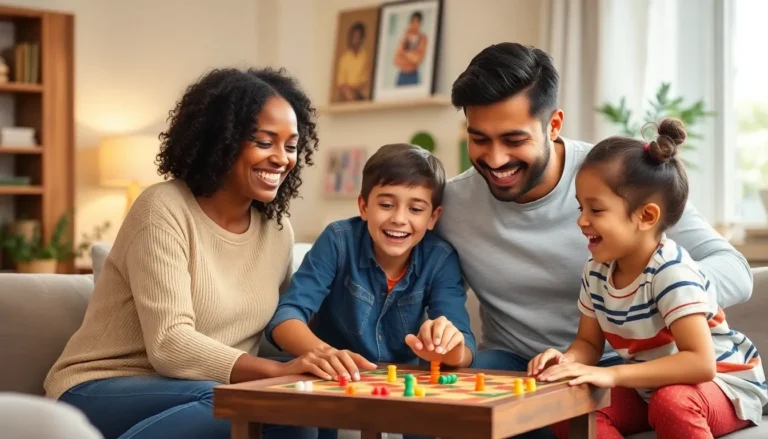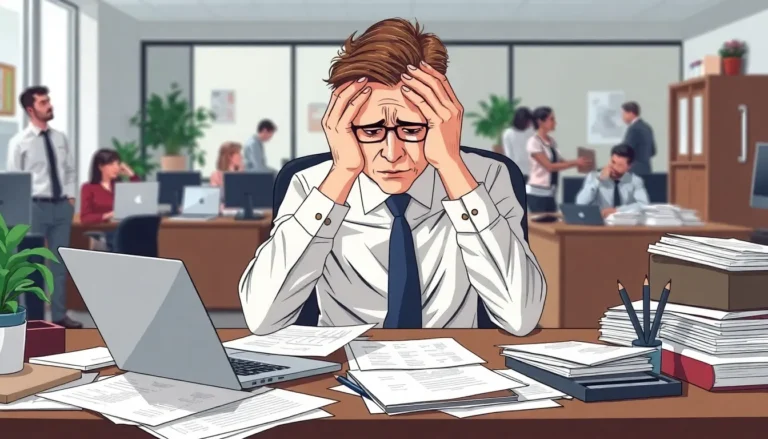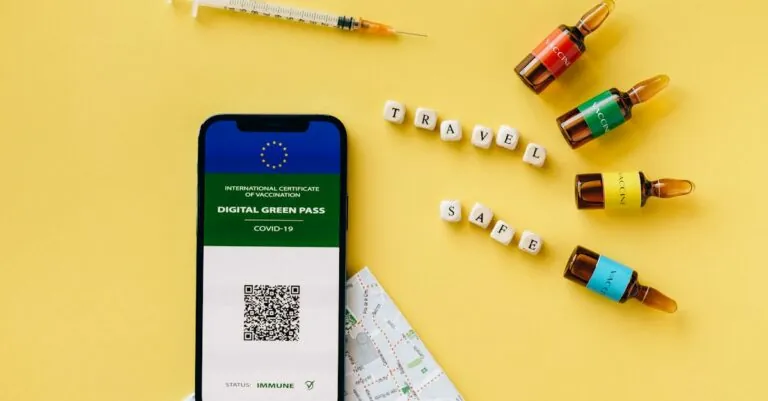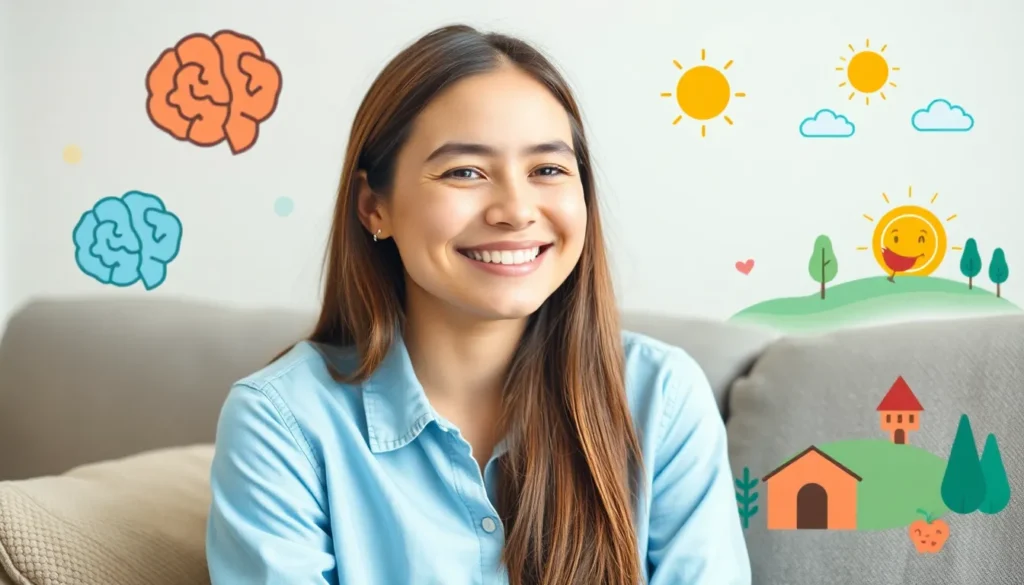Table of Contents
ToggleIn a world where stress seems to be the new normal, mental health matters more than ever. Whether it’s a quirky illustration of a smiling brain or a cozy couch inviting you to take a break, clipart can add a splash of color to conversations about mental wellness. It’s not just about pretty pictures; it’s about breaking the stigma and sparking dialogue.
Imagine scrolling through a presentation filled with dull graphs and text-heavy slides. Now picture vibrant clipart that makes mental health discussions feel approachable and fun. These visuals don’t just decorate; they engage and educate. So, why not make mental health a topic that’s not only important but also visually appealing? Dive into the world of mental health matters clipart and discover how it can transform serious discussions into relatable, memorable moments.
Overview of Mental Health Matters Clipart
Mental health matters clipart serves as a valuable tool in fostering conversations about emotional well-being. Illustrative elements like smiling brains, serene couches, and supportive hands capture attention and evoke empathy. By using these visuals, discussions on mental health become more accessible and inviting.
Numerous designs are available in this niche, featuring diverse characters, symbols, and situations. Colorful graphics can enhance presentations, brochures, and social media posts, making them more eye-catching. Research shows that visual storytelling can significantly improve audience engagement, particularly on complex topics like mental health.
Common clipart styles include cartoons, infographics, and icons that represent various mental health themes. Users can find sets specifically tailored for awareness campaigns, educational content, or personal projects. Incorporating these designs into materials not only educates but also encourages dialogue.
Digital platforms often provide free and paid options, catering to different needs. Quality varies, so selecting high-resolution images ensures clarity in presentations. Websites dedicated to clipart offer user-friendly interfaces, simplifying the search for specific themes related to mental wellness.
Emphasizing mental health through visual means challenges stigma and promotes understanding. Effective imagery can initiate conversations in schools, workplaces, and therapy sessions. Engaging visuals resonate with diverse audiences, making it easier to discuss sensitive issues.
Utilizing mental health matters clipart positively impacts community outreach. Organizations can boost their campaigns by integrating relevant and relatable imagery. Ultimately, these visuals support a collective effort to normalize discussions surrounding mental health and foster a supportive environment.
Importance of Visuals in Mental Health Awareness

Visuals play a vital role in mental health awareness. They enhance understanding and make discussions more approachable.
Enhancing Communication through Clipart
Clipart simplifies complex mental health concepts. Engaging graphics allow individuals to convey messages effectively. Using images like icons and cartoons can illustrate key ideas. Visuals break barriers in communication, fostering open dialogues. Organizations find that incorporating clipart into presentations and brochures increases engagement. Audiences connect more easily with relatable imagery, making crucial discussions feel more accessible. Research supports that visuals boost retention and comprehension, especially in discussions about mental wellness.
Emotional Impact of Visual Aids
Visual aids evoke emotions and foster connections. Eye-catching clipart can resonate with individuals experiencing various mental health challenges. Strong visuals promote empathy and understanding within communities. These images encourage individuals to share their experiences, creating a sense of belonging. In addition, positive representations of mental health can inspire hope and motivation. Considering the emotional weight of mental health topics, visuals uplift discussions and help reduce stigma. Effective imagery can make conversations about mental wellness more relatable, ultimately leading to increased support and awareness.
Types of Mental Health Matters Clipart
Mental health matters clipart encompasses a variety of designs that help convey important messages about emotional well-being. It includes illustrations for different mental health themes and applications in education and therapy.
Illustrations for Various Mental Health Themes
Clipart designs often reflect diverse mental health themes, including anxiety, depression, and resilience. Common images range from brains with smiley faces to calming landscapes that promote wellness. Cartoons and infographics illustrate complex concepts in an engaging way. Each image enhances presentations or social media posts, making discussions more relatable and approachable. Audiences respond positively to these visuals, as they simplify difficult topics, encouraging open dialogues about mental health.
Applications in Education and Therapy
Clipart serves significant roles in education and therapy. Educators often utilize visuals to facilitate discussions about mental health among students, helping normalize conversations. Therapists employ clipart in worksheets or handouts, providing clients with clear representations of mental health concepts. The clarity of visuals supports better understanding and retention of information, making learning more effective. Additionally, these graphics can evoke emotions and spark discussions, aiding both educators and therapists in fostering supportive environments.
How to Choose the Right Clipart
Selecting appropriate clipart for mental health discussions involves careful consideration of its impact. Imagery must reflect sensitivity and resonate with the intended audience.
Considerations for Appropriateness and Sensitivity
Appropriateness in clipart selection plays a vital role in discussion about mental health. Consider images that reflect respect for the topic and the audience’s experiences. Representations should avoid stereotypes and sensitive themes that might cause distress. Seek illustrations that promote understanding and empathy, fostering a safe environment for dialogue. Aim for visuals that can inspire, educate, and empower individuals, ensuring every piece of clipart aligns with these goals.
Tips for Finding High-Quality Images
Finding high-quality clipart requires a strategic approach. Start by using reputable sources, focusing on well-known platforms that specialize in licensed imagery. Inspect resolution to ensure that images maintain clarity across various formats. Look for options that provide customization, allowing for modification to suit specific contexts. Explore both free and paid alternatives, weighing factors such as image uniqueness, diversity, and relevance to mental health themes. Prioritize designs that facilitate clear communication while engaging the audience effectively.
Mental health matters clipart serves as a powerful tool in promoting awareness and fostering open conversations. By utilizing engaging visuals, individuals and organizations can effectively communicate important messages about emotional well-being. These images not only simplify complex concepts but also create a welcoming atmosphere for discussions that might otherwise feel daunting.
The right clipart can resonate deeply with audiences, encouraging empathy and understanding. As the stigma surrounding mental health continues to diminish, incorporating thoughtful and high-quality visuals can play a crucial role in supporting this movement. By prioritizing sensitivity and appropriateness in imagery, everyone can contribute to a more supportive environment for mental health discussions.







